My grandfather, Raymond Edward Wegley, was born in Fort Smith, Arkansas on December 15, 1925. He died on December 4, 1992, in Sapulpa, Oklahoma, just before his 67th birthday.
My grandfather was born during the height of the Roaring Twenties, a decade marked by economic prosperity, cultural change, and modernization in the U.S. Society was rapidly transforming due to advancements in technology, new entertainment trends, and shifts in social norms.
- The 1920s were defined by a booming economy, often called the “Roaring Twenties.” This era was characterized by the growth of consumer goods industries, mass production (such as Ford’s assembly line), and increasing urbanization.
- Fort Smith, Arkansas, as a regional hub, likely felt some of this economic prosperity but was still largely rural and agricultural compared to urban centers.
- Prohibition was in full swing in 1925 (1920-1933), making the production, sale, and transportation of alcoholic beverages illegal under the 18th Amendment. Speakeasies, bootlegging, and organized crime marked this era.
- In rural areas like Arkansas, temperance movements were often more strictly adhered to, though illicit moonshining was widespread.
- The South, including Arkansas, was deeply segregated due to Jim Crow laws. These laws enforced racial discrimination and limited opportunities for African Americans. At the same time, Black communities were creating vibrant cultural and social institutions despite systemic oppression.
- Radio technology was transforming communication and entertainment. By 1925, radios were becoming more common in homes, bringing music, news, and sports broadcasts to people nationwide.
- Automobiles were also becoming more accessible, reshaping rural and urban life.
- The world was still recovering from the devastation of World War I (1914-1918). The League of Nations, though not joined by the U.S., was attempting to mediate international conflicts and promote peace.
- In Europe, Benito Mussolini had consolidated power in Italy by 1925, signaling the rise of fascism as a political force. This would later have profound implications for the world.
- Jazz music and the Harlem Renaissance were influencing culture worldwide, spreading from the U.S. to Europe.
- In December 1925, F. Scott Fitzgerald’s The Great Gatsby was still fresh in people’s minds, encapsulating the glitz and disillusionment of the era.
My grandfather’s birth places him in the midst of a transformative decade. The culture, politics, and economics of the 1920s would shape his childhood and early life.
This backdrop can provide a rich narrative foundation for discussing your grandfather’s early years, as he grew up in an America balancing progress and tension. You might also explore how the culture and history of Fort Smith specifically influenced his life.
Raymond Edward Wegley fought in World War II in the US Navy. He served on the USS Earl K. Olsen.
The USS Earl K. Olsen (DE-765) was a Cannon-class destroyer escort named in honor of Lieutenant Commander Earl Kenneth Olsen, who was posthumously awarded the Navy Cross for his heroism during the Battle of Tassafaronga in World War II.
After commissioning, the USS Earl K. Olsen served as a training ship for the Fleet Sound School in Key West, Florida. Between August 28, 1944, and May 24, 1945, she completed six convoy escort voyages between the United States and United Kingdom ports. Notably, on March 13, 1945, during a voyage to Southampton, she rescued two men after a collision between USAT J.W. McAndrew and the French aircraft carrier Béarn in a violent storm, escorting the damaged ships to the Azores for emergency repairs.
The USS Earl K. Olsen played a vital role in both the Atlantic and Pacific theaters during World War II, ensuring the safe passage of convoys across the Atlantic and supporting post-war operations in the Pacific. Her service exemplified the versatility and endurance of Cannon-class destroyer escorts in the U.S. Navy.
He joined the war on November 29, 1943, at the age of 17, and was officially discharged on April 28, 1946.
His brother John W. Wegley entered service the month before on February 19, 1943. But he went into the army. I don’t know why my grandfather chose the Navy instead of the army like his brother.
He was a Sergeant First Class and was awarded several medals for his service to his country.
Two years after he got out of the military, he married my grandmother, Elsie Jane Hoag, on June 5, 1948, in Pennsylvania. Together, they would have 4 children, three boys and only one girl (my mother).
- Thomas Eugene (June 13, 1949)
- Karen Marie (January 26, 1951)
- Raymond Junior (December 11, 1952)
- Robert Thomas (September 27, 1954)
My grandfather Raymond retired from Bartlett Collins glass factory in Sapulpa, Oklahoma, and this photo was taken on his last day of work in April of 1989.
Just 3 years later, he would die in his sleep of a heart attack on December 4, 1992.
He was buried in Sapulpa, Oklahoma, at the Green Hill Memorial Gardens Cemetery.
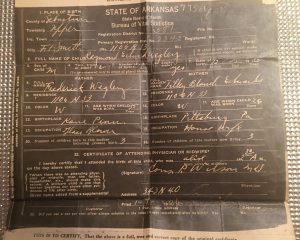

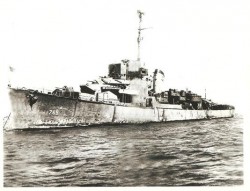
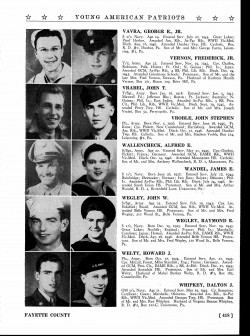
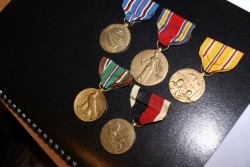
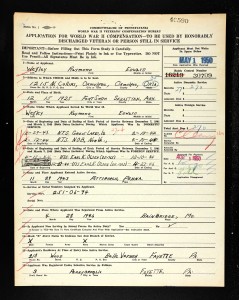
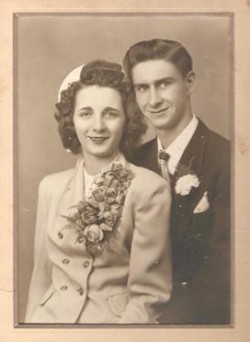
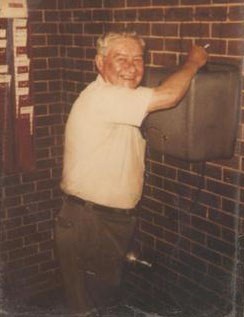
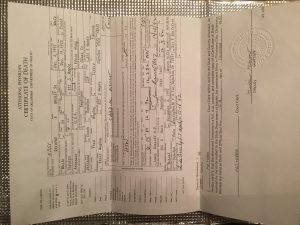
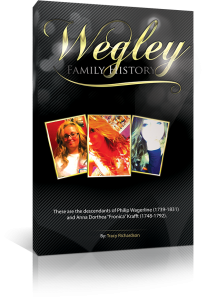
You must be logged in to post a comment.